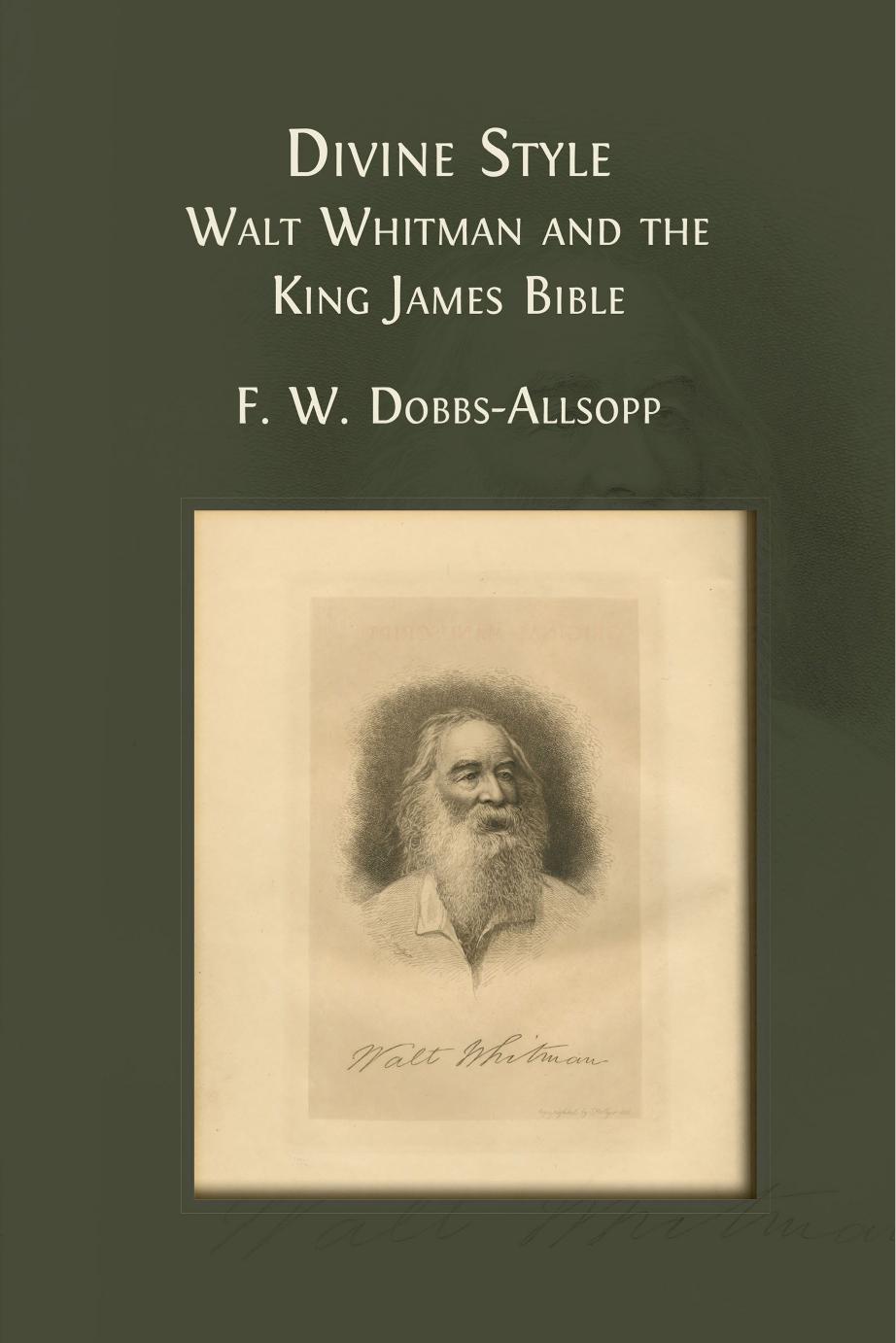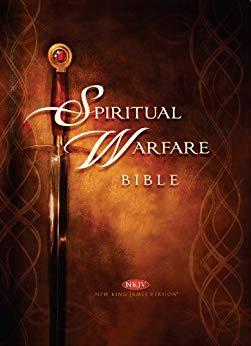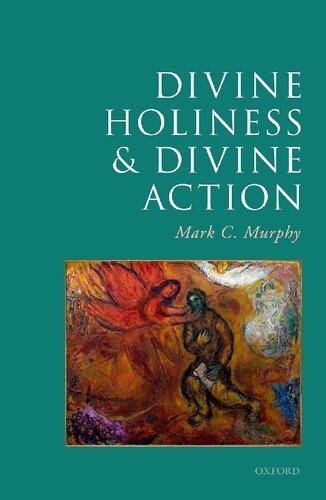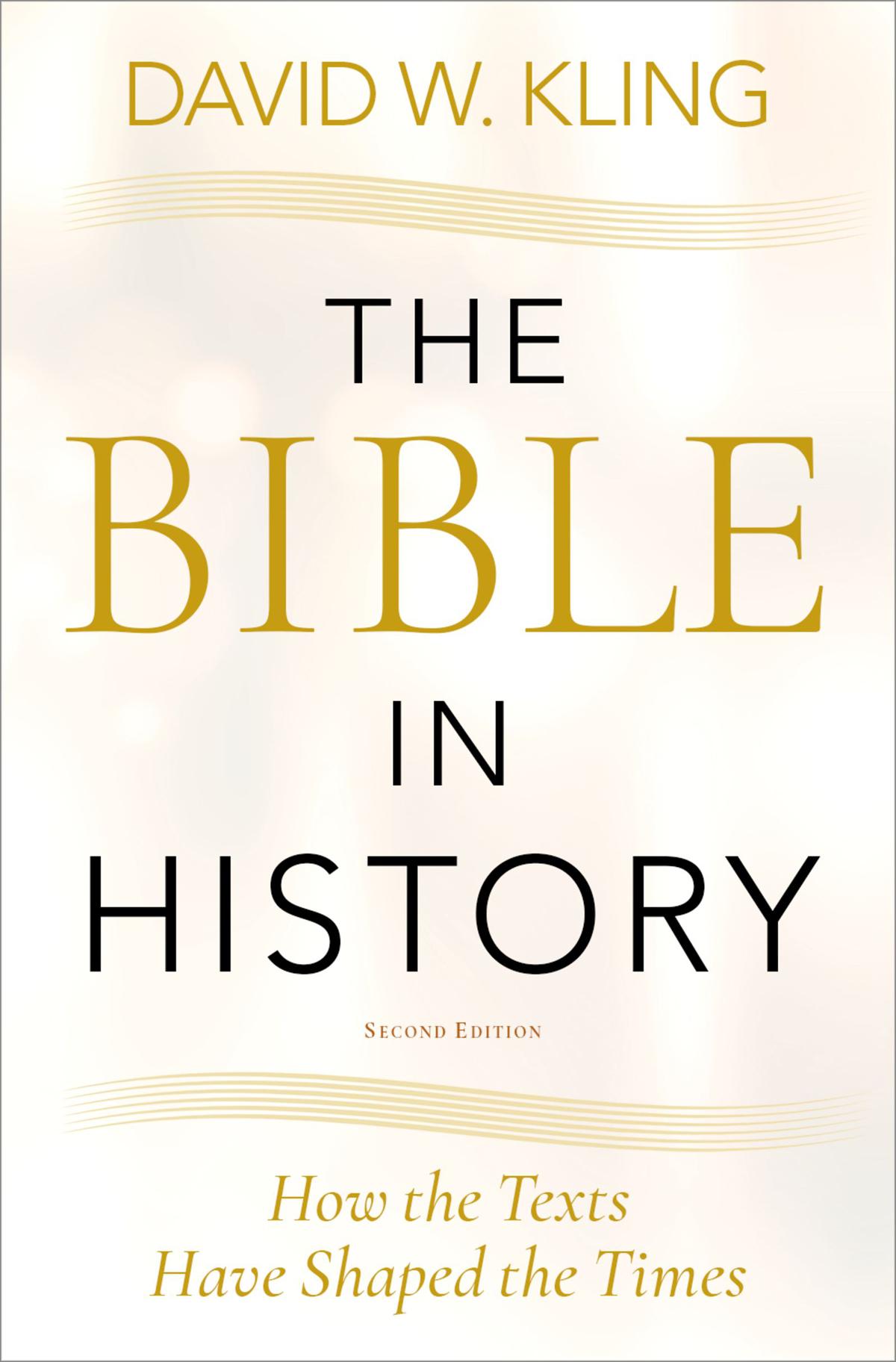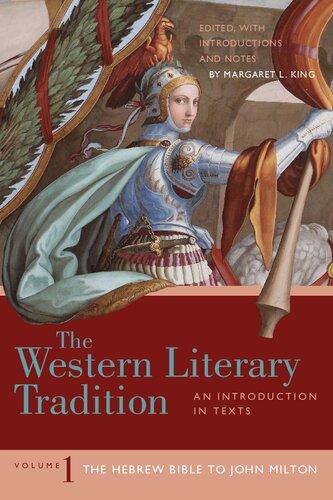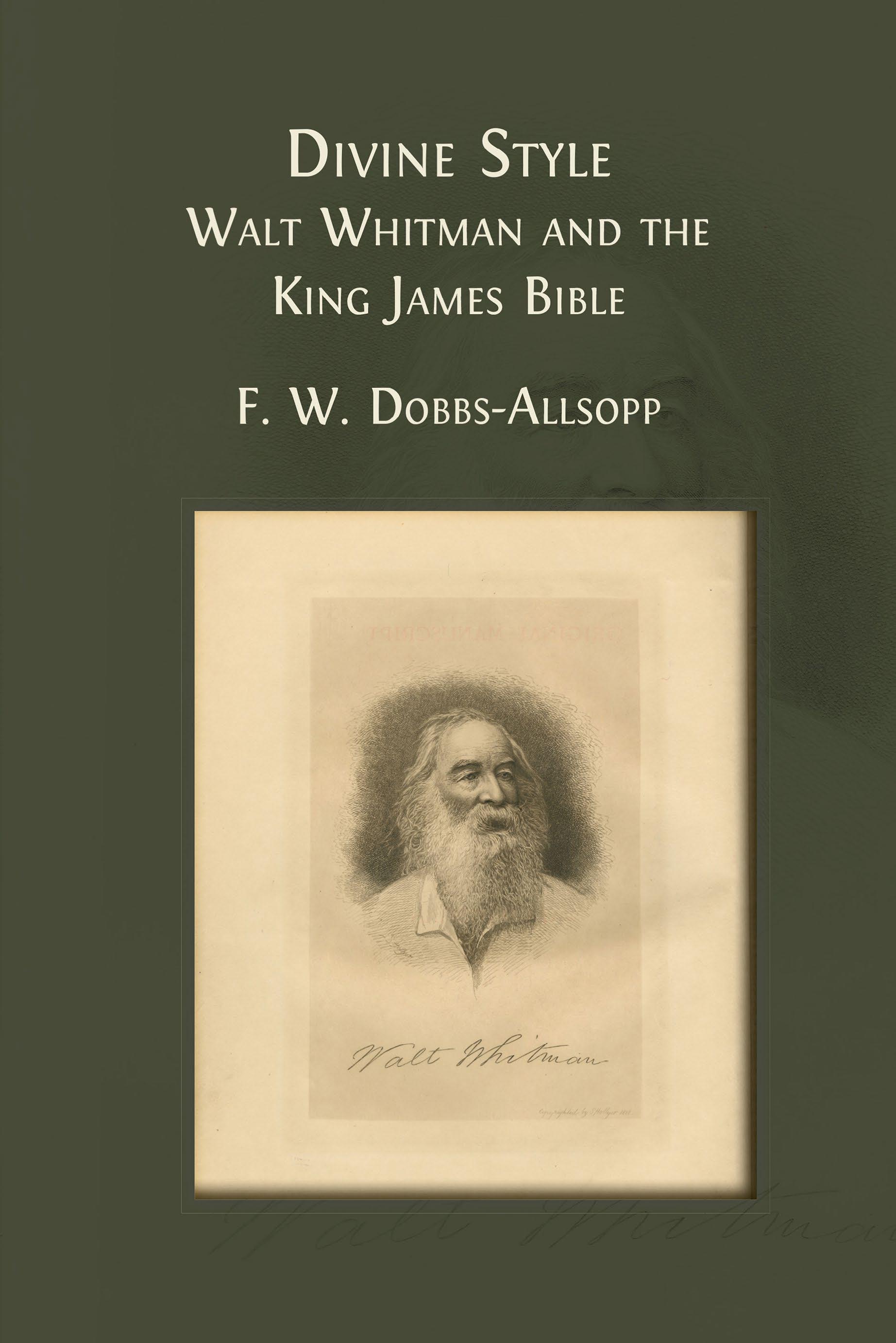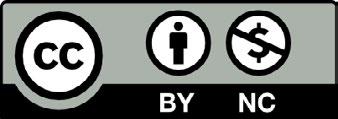Acknowledgements
This is a work of philological and literary-critical scholarship, and yet it is suffused with much love and affection for the subject matter, which, after all, is the heartbeat of all good philology (etymologically, the literal “love of words”). My love for Walt Whitman and his poetry, in the first place, came from my mother Gladys “Ginger” Smith, an English professor who grew up in Huntington, Long Island and attended Walt Whitman High School. She loved Whitman and taught his poetry regularly; in fact, my brother, David Allsopp, wrote a paper on Whitman for one of her classes. My own adult reawakening to Whitman came as a doctoral student when I bought a used copy of Leaves of Grass. I was just then beginning to think seriously about biblical Hebrew poetry and as I began (re)reading Leaves I could not help but hear and feel the biblical undercurrents in Whitman’s verse. Maybe already here is the planting of the seed for what would become this project. More certainly, Whitman would eventually help me figure out how to conceptualize the decidedly non-metrical verse of the Hebrew Bible. The introductory sub-section of a chapter on my understanding of the free rhythms (free verse) of biblical poetry is entitled, “Through Whitman’s Eyes.” As the sub-section tipped over eighty pages, I knew I had to find another outlet for my thoughts on Whitman and the Bible. It was then that this book was truly born.
As with most of my writing projects, I owe much to many, most of whom I cannot individually acknowledge here. But I am deeply grateful to all who helped me with one aspect or another of this project. Thank you all. There are some I must mention. In the first place, I owe a huge debt of gratitude to my Hebrew Bible/Old Testament colleagues, both here at the Seminary and across the field, who have indulged my insistence on reading papers on Whitman in venues not accustomed to such topics. In particular, I thank the following: the University of Chicago Divinity School where I presented my first
public presentation on Whitman—Simi Chavel was my host and Rick Rosengarten served as the respondent; on another trip to Chicago Simi Chavel and Jaime Zamparelli Abramov helped me work through Codex Ms263, Whitman’s holograph manuscript of”The Bible as Poetry” essay; Vanderbilt Divinity School and my host Leong Seow and his students, where we discussed all manner of things including Whitman—there is a bit of Leong’s history of consequences project ghosting through this book; the American Church in Paris, where my wife Leslie and I were hosted by our good friend and former classmate Scott Herr and which afforded me the opportunity to learn about Whitman’s impact on French vers libre and much also about the art of the readymade; the Columbia Hebrew Bible Seminar, which has been a hospitable scholarly home for me for my entire career; and the Old Testament Research Colloquium at Princeton Seminary, where I presented twice on Whitman and both were consequential for this book: in the first Mark Smith insisted that I could not write a book on Whitman and the Bible without a chapter on parallelism; and in the second Elaine James equally firmly insisted that my re-reading of Lowth needed to appear in a more Bible-centric publishing venue—the chapter does exist (Chapter Four) and is a little lighter and more readable for my having placed the more detailed reading of Lowth in the Journal of Hebrew Scriptures, https://jhsonline. org/index.php/jhs/article/view/29586.
On the Whitman side, thanks to the two reviewers of the manuscript for Open Book Publishers (https://www.openbookpublishers.com/), both for their critical insights about aspects of my argument and for their affirmation of the project as a whole. I also am appreciative of the early encouragement from Ken Price and Ed Folsom. The Walt Whitman Archive (https://whitmanarchive.org/) has matured over the course of this project and has become one of the premier digital repositories in the humanities. Both as a non-specialist and as a visually disabled academic, it is impossible for me to imagine completing this project without the existence of this archive. Thanks to the editors and all who have worked on the Archive. This book is at least one tangible example of what can be done when primary sources and quality scholarship are made easily and freely available. And whether or not the builders of this fabulous resource had print disabled users in mind as they created the Archive, it is a great boon for us, for (giving us) the capacity to continue doing primary research on such a rich textual corpus. Thank you. If ever there was a publisher well positioned to match the ideas and values
that animate the Walt Whitman Archive, it is Open Book Publishers, with their commitments to Open Access publishing, publishing high quality scholarship, and exploring how digital technologies can expand and enhance the academic monograph. Alessandra Tosi and her colleagues have been a joy to work with. I am honored and excited to be publishing with OBP—thanks to my colleague Elaine James for bringing OBP to my attention and encouraging me to explore the possibility of publishing with them. Matt Green served as my research assistant this year and has worked as hard on the final manuscript as anyone. Having lost my ability to read print in the last few years, this manuscript would not have made it to publication without Matt’s contribution. And even more crucially, Matt has helped me learn to lean on others’ eyes. And thanks to Princeton Theological Seminary for being my academic home for almost twenty-five years and whose sane teaching load and generous sabbatical policy means that faculty have time to research and write. Last but never least, I thank Leslie Dobbs-Allsopp, my wife, my lover, and my best friend. My scholarship has always only emerged in her company. This book is no different, except I think we both agree that our journey with Walt—from Camden to New York, to Paris and back— has been by far the most enjoyable. I am a little sad that this particular journey has come to a close, but most happy that Les and I still have yet many roads to travel together. And no doubt Walt Whitman will be one of our perennial companions—
I bequeath myself to the dirt to grow from the grass I love,
If you want me again look for me under your bootsoles.
Failing to fetch me me at first keep encouraged, Missing me one place search another,
I stop somewhere waiting for you (LG, 56)1
1 I cite these famous lines from the end of what would later be called “Song of Myself” in the version of that first edition of Leaves of Grass (1855). There are two probable mistakes in these lines—the philologist in me, of course, loves the untidiness of the material artifact: the doubly written “me” in the third line quoted and the lack of a period at the end of the final line. Both are corrected in succeeding editions. But I very much like, mistake or not, how the refusal of sentential closure (no period) wonderfully ramifies the never-ending nature of the promise Whitman is here making to his readers, then and for all time to come.
Abbreviations
ANET –Ancient Near Eastern Texts Relating to the Old Testament. Edited by J. B. Pritchard. 3d ed. Princeton, 1969
ASV – American Standard Version (1901)
BDB – F. Brown, S. R. Driver, and C. A. Briggs. A Hebrew and English Lexicon of the Old Testament. Oxford, 1907
BHS – Biblia Hebraica Stuttgartensia. Edited by K. Elliger and W. Rudolph. Stuttgart, 1983
CPW – Walt Whitman, The Complete Prose Works. Philadelphia: David McKay, 1892, https://whitmanarchive.org/published/other/CompleteProse.html
CW – The Complete Writings of Walt Whitman. Edited by Richard Maurice Bucke, Thomas Biggs Harned, Horace Traubel, and Oscar Lovell Triggs. New York: G. P. Putnam’s Sons, 1902
DBN – Daybooks and Notebooks. Ed.William White. 3 vols. New York: New York – University Press, 1978 (ACLS Humanities E-Book)
DO – direct object
Drum-Taps – Walt Whitman. Drum-Taps. New-York, 1865, https://whitmanarchive.org/published/other/DrumTaps.html
EPF – The Early Poems and the Fiction. Ed. T. L. Brasher. New York: New York – University, 1963
Folsom, “Whitman” – A collection of early, fragmentary manuscript drafts for “I celebrate myself” (later “Song of Myself”), http://bailiwick.lib.uiowa.edu/whitman/
HALOT – Koehler, L., W. Baumgartner, and J. J. Stamm. The Hebrew and Aramaic Lexicon of the Old Testament. Translated and edited under the supervision of M. E. J. Richardson. 5 vols. Leiden, 1994–2000
IBHS – An Introduction to Biblical Hebrew Syntax. B. K. Waltke and M. O’Connor. Winona Lake, 1990
Inf Abs – infinitive absolute
KJB – King James Bible (1611)
LG – Walt Whitman. Leaves of Grass. Brooklyn, New York, 1855, https://whitmanarchive.org/published/LG/1855/whole.html
LG 1856 – Walt Whitman. Leaves of Grass. Brooklyn, New York, 1856, https://whitmanarchive.org/published/LG/1856/whole.html
LG 1860 – Walt Whitman. Leaves of Grass. Boston: Thayer and Eldridge, 1860–61, https://whitmanarchive.org/published/LG/1860/whole.html
LG 1867 – Walt Whitman. Leaves of Grass. WM. E. Chapin & Co, Printers, 24 Beekman – Street, New York, 1967, https://whitmanarchive.org/published/LG/1867/whole.html
LG 1881 – Walt Whitman. Leaves of Grass. Boston: James R. Osgood and Company, 1881–82, https://whitmanarchive.org/published/LG/1881/whole.html
LG 1891-92 – Walt Whitman. Leaves of Grass. Philadelphia: David McKay, 1891–92, https://whitmanarchive.org/published/LG/1891/whole.html
MT – Masoretic text (the textus receptus of the Hebrew Bible)
Neg – negative particle
NJV – New Jewish Version (Jewish Publication Society)
NP – noun phrase
NPEPP – The New Princeton Encyclopedia of Poetry and Poetics. Eds. A. Preminger and T. V. F. Brogan. Princeton: Princeton University, 1993
NRSV – New Revised Standard Version
NUPM – Notebooks and Unpublished Prose Manuscripts. Ed. Edward F. Grier. 6 vols. New York: New York University Press, 1984 (ACLS Humanities E-Book)
O/Obj – object
OED – Oxford English dictionary, https://www.oed.com
PEPP – The Princeton Encyclopedia of Poetry and Poetics. Edited by Stephen Cushman, et al. Princeton: Princeton University Press, 2012 (Kindle edition)
PP – prepositional phrase
PW – Walt Whitman, Prose Works 1892. Ed. F. Stovall. 2 vols. New York: New York University, 1963–64
RV – Revised Version (1885)
S/Subj – subject
Sequel – Walt Whitman. Drum-Taps and Sequel to Drum-Taps. New-York/ Washington, 1865/1865–66, https://whitmanarchive.org/published/other/DrumTapsSequel.html
UPP – The Uncollected Poetry and Prose of Walt Whitman. Edited by E. Holloway. 2 vols. Garden City: Doubleday, 1921
V/Vb – verb
WWA – The Walt Whitman Archive, https://whitmanarchive.org
WWWC – H. Traubel. With Walt Whitman in Camden. 9 vols. 1906–96, https://whitmanarchive.org/criticism/disciples/traubel/index.html
Prefatory Note on Links
Unless noted otherwise, the editions of Walt Whitman’s many unpublished writings (e.g., notebooks, unpublished poetry manuscripts, letters) used in this study are those found on the Walt Whitman Archive (https://whitmanarchive.org/). These are referenced by title only in the body of the text (without supporting bibliography in an effort to reduce some of the clutter in the footnotes), so readers are directed to the appropriate sections of the Archive (e.g., In Whitman’s Hand, https://whitmanarchive.org/manuscripts/index.html) for critical editions (transcriptions, images, references to supporting secondary literature) of these texts. Links to the Walt Whitman Archive (and other publicly accessible repositories with Whitman holdings) for Whitman’s writings are provided whenever possible. My preference throughout is to link to specific page images, since this allows for a more precise reference to the passage in view. More general links to the various digital editions of Whitman’s writings are provided in the List of Abbreviations, Selected Bibliography, and, as a rule, upon first mention in each chapter. Therefore, in many cases, readers will be able to easily access both page images and the critical transcriptions of individual texts. Digital object identifiers (DOIs) are provided (where they exist) in the Selected Bibliography. There, too, I link to books and articles made accessible on the Walt Whitman Archive, viz. Select Criticism, https://whitmanarchive.org/criticism/current/index.html.
Introduction
“The interior & foundation quality of the man [Walt Whitman] is Hebraic, Biblical, mystic”
— Walt Whitman, “Introduction to the London Edition” (1867)
“Suppose the comparative method applied to such an order a theory & practice of poetry as Walt Whitman’s, and a new floods of light are forthwith thrown on what would otherwise be puzzling & dark”
— Walt Whitman, “Is Walt Whitman’s Poetry Poetical?” (1874)
Having recently celebrated the 400th anniversary of the King James Bible (2011) and the 200th anniversary of Walt Whitman’s birth (2019), it is fitting to take a fresh look at what has been one of the oldest preoccupations of Whitman scholarship: the nature and extent of the KJB’s influence on Whitman and his mature style, especially as manifested in the early editions of Leaves of Grass. Whitman was an inveterate collagist of outside writing, an appropriator of found language, extracting “phrases and lines that attracted him, and in the process of moving them from their initial sources into new contexts, he filtered and changed their tone and meaning.”1 His sources are manifold and diverse, ranging from an ornithological guidebook to newspaper reports of Civil War battles, Ralph Waldo Emerson’s lectures and essays, George Sand’s The Countess of Rudolstadt, and Jules Michelet’s The People and The Bird, to cite some of the better documented examples.2 It is therefore no surprise that the English Bible, which Whitman counted among the finest poetry of the world (“I don’t know but the deepest
1 Matt Miller, Collage of Myself (Lincoln: University of Nebraska, 2010), 86; see also Paul Zweig, Walt Whitman: The Making of the Poet (New York: Basic Books, 1984), 151–52.
2 See Miller, Collage of Myself, 26, 79–103; Zweig, Walt Whitman, 143–63; and esp. Floyd Stovall, The Foreground of Leaves of Grass (Charlottesville: University Press of Virginia, 1974).
and widest”)3 and which he noted he “went over thoroughly” during “summers and falls” at “Long Island’s seashores,” should be for him another source of found language, imagery, themes, rhythm, and style to mine and mold and mobilize into Leaves. Indeed, it may well be, as G. W. Allen states, that “no book is more conspicuous in Walt Whitman’s ‘long foreground’ than the King James Bible.”4
It has certainly become a common trope among Whitman scholars and biographers to reference summarily some vague and probably unconscious influence of the Bible on Whitman’s writing. Matt Miller’s version of the trope is typical: “That Whitman was aware that his line seemed biblical is undeniable, and he was surely influenced, even if only unconsciously, by English translations of the Bible’s Hebraic rhythms.”5 Such statements are usually prefaced by the intimation of a prolonged history of discussion—implicit justification for the abbreviated comment—and are often accompanied by expressions of dissatisfaction with the overall thesis or its implications (“But the Bible of course must have always been present as a potential influence in Whitman’s mind, so….”).6 However, aside from Allen’s two groundbreaking essays from the early 1930s, “Biblical Analogies for Walt Whitman’s Prosody” (1933) and “Biblical Echoes in Whitman’s Works” (1934), and T. E. Crawley’s initial statement on the “ChristSymbol” in Leaves in a chapter of his The Structure of Leaves of Grass
3 CPW, 379.
4 A Reader’s Guide to Walt Whitman (Syracuse: Syracuse University, 1970), 24.
5 Collage of Myself, 25. Already in 1933 Allen can summon an early version of the trope: “Many critics have ventured opinions on the influence of the Bible on Whitman’s versification….” (“Biblical Analogies for Walt Whitman’s Prosody,” Revue Anglo-Americaine 6 [1933], 490–507, at 490). And again in his The Solitary Singer: A Critical Biography of Walt Whitman (rev ed; New York: New York University, 1967 [1955]), 144), though now only requiring parenthetical notice: “In his early free verse experiments he may have used several literary sources (certainly including the King James Bible), but….” Stovall offers yet another version of the trope: “There is abundant evidence that Whitman was familiar with the Bible both as a young man and later” (Foreground, 56).
6 Miller, Collage of Myself, 25. C. Carroll Hollis is even more dismissive: the language that was formational for the early Leaves, he maintains, was not “that of the Bible, which he [Whitman] seems to have venerated or even studied only in old age, when he touted the Bible to pick up a little credit for Leaves by a sort of cultural back-formation” (Language and Style in Leaves of Grass [Baton Rouge/London: Louisiana State University, 1983], 205).
(1970), there has been no substantive published treatment of the general topic.7
The subject is an old one, dating at least as far back as 1860 where an unsigned review in the Boston Cosmopolite remarks, “In respect of plain speaking, and in most respects, Leaves more resembles the Hebrew Scriptures than do any other modern writings.”8 Other brief notices in contemporary reviews followed.9 Whitman himself, as just noted, makes explicit meta-references to the Bible (more on this in Chapter One). Beginning with Bliss Perry in 1906, Whitman’s many biographers have routinely noticed his knowledge and use of the Bible.10 Finally, a
7 Allen, “Biblical Analogies,” 490–507; “Biblical Echoes in Whitman’s Works,” American Literature 6 (1934), 302–15; T. E. Crawley, The Structure of Leaves of Grass (Austin: University of Texas, 1970), esp. 27–49, 50–79.
8 4 August 1860 (page number unknown), https://whitmanarchive.org/criticism/ reviews/lg1860/anc.00037.html; reprinted in Richard Maurice Bucke, Walt Whitman (Philadelphia: David McKay, 1883), 200–01; and also in Milton Hindus, Walt Whitman (New York/London: Routledge, 1997), 103–04; cf. Kenneth Price, Walt Whitman: The Contemporary Reviews (Cambridge: Cambridge University, 1996), 108. There is also a slightly earlier passing notice of Whitman as “too Hebraic to be polite” by his friend G. S. Phillips (“Literature. Leaves of Grass— by Walt Whitman,” New York Illustrated News 2 [26 May 1860], 43, https:// whitmanarchive.org/criticism/reviews/lg1860/anc.01068.html; reprinted in Walt Whitman, A Child’s Reminiscence [T. O. Mabbott and R. G. Silver, eds.; Seattle: University of Washington, 1930], 33.
9 William D. O’Connor, “Walt Whitman,” The New York Times (2 December 1866), 2, https://whitmanarchive.org/criticism/reviews/lg1867/anc.00064. html. O’Connor, of course, by this time had become a close friend of Whitman’s and one of his staunch defenders, and thus his notice of the poet’s similarities to “the poetic diction of the Hebraic muse” strongly implies Whitman’s own conscious awareness of the same); Robert Buchanan, David Gray and Other Essays (London, 1868), 207; William Michael Rossetti, “Prefatory Notice” in Poems by Walt Whitman (London: John Camden Hotten, Piccadilly, 1868), 6, https://whitmanarchive.org/published/books/other/rossetti.html; George Saintsbury, “Review of Leaves of Grass (1871),” The Academy 6 (10 October 1874), 398–400, https://whitmanarchive.org/criticism/reviews/lg1871/anc.00076.html; Anonymous, “Walt Whitman, a Kosmos,” The Springfield Sunday Republican (13 November 1881), 4, https://whitmanarchive.org/criticism/reviews/lg1881/ anc.00208.html; G. E. M., “Whitman, Poet and Seer,” The New York Times (22 January 1882), 4, https://whitmanarchive.org/criticism/reviews/lg1881/ anc.00216.html; R. L. Stevenson, Familiar Studies of Men and Books (London: Chatto and Windus, 1882), 106, 120–21; R. M. Bucke, Walt Whitman (Philadelphia: David McKay, 1883), 103, 119, 185; W. Harrison, “Walt Whitman’s ‘November Boughs’,” The Critic n.s. 11 (19 January 1889), 25, https://whitmanarchive.org/criticism/ reviews/boughs/anc.00123.html; Oscar Wilde, “The Gospel According to Walt Whitman,” The Pall Mall Gazette (25 January 1889), 3, https://whitmanarchive.org/ criticism/reviews/boughs/anc.00124.html.
10 Walt Whitman: His Life and Work (New York: Houghton, Mifflin and Company, 1906).
number of briefer notices of various sorts (e.g., specific allusions to the Bible in Whitman, Whitman’s prophetic voice) have been published over the years. But this is about the sum of it. In general, scholarship on the topic of the Bible and Whitman is actually rather thin and, even at its best—as in Allen’s early articles and in his several restatements over the course of his career—often problematic. In fact, M. N. Posey in his 1938 dissertation comes essentially to the same conclusion: general assertions of Whitman’s debt to the English Bible, though multiple and varied, “have not usually been followed by careful investigation and massing of evidence.”11 I cannot see that things have changed greatly in the intervening eighty years since Posey’s statement. My impression is that this remains a subject that would repay the kind of detailed philological treatment that Posey calls for (and in part delivers) and which has been paid to the question of the English Bible in other writers (e.g., Shakespeare, Melville).12
My own ambition for what follows is more modest and framed explicitly from the perspective of an outsider, that of a biblical scholar and not a Whitman specialist. Biblical and Whitman specialists have much in common (e.g., how they read texts, the diachronic orientation of their research). Both also curate disciplinary-specific knowledge that is difficult for the non-specialist to assimilate fully, no matter how patient and persistent the research. Here I seek to leverage the fieldspecific knowledge of a biblicist in querying Whitman’s literary debt to the KJB. No (Hebrew) Bible scholar can read Leaves of Grass and fail to hear and feel its familiar rhythms, style, and, at times, even manner of phrasing.13 My aim will be to give these impressions some more precise articulation and illustration. In the end, I think Allen’s strong intuition, however much he hedges in the name of scholarly propriety, that Whitman’s debt to the KJB is substantial and significant is correct.
11 “Whitman’s Debt to the Bible with Special Reference to the Origins of His Rhythm” (unpubl. Ph.D. dissertation, University of Texas, 1938), 1.
12 E.g., Ilana Pardes, Melville’s Bibles (Berkeley: University of California, 2008); H. Hamlin, The Bible in Shakespeare (Oxford: Oxford University, 2013).
13 The Israeli poet Shin Shalom refracts this same sensibility when he states, “Whitman’s pioneering is very close to us, and so are his Biblical rhythms. To translate him into Hebrew is like translating a writer back into his own language” (New York Herald Tribune Book Review [26 March 1950], 3).
My efforts here are offered in the spirit of Allen’s own project, to the same end, and in admiration of his perceptions. Since the post-1995 re(dis)covery of some of Whitman’s lost notebooks, scholars have been able to narrow the timeframe for the emergence of Whitman’s mature style to the early 1850s.14 With the aid of the notebooks and early poetry manuscripts, exciting glimpses of this new style can be seen evolving on the page. Still, what provoked these writing experiments that would culminate in the 1855 Leaves remains as ever a mystery, perhaps not entirely by accident. It is nonetheless the case, in anticipation of the conclusions reached in what follows and stated most positively, that those aspects most reminiscent of the English Bible—Whitman’s signature long lines, the prevalence of parallelism and the “free” rhythms it helps create, his prosiness and tendency towards parataxis, aspects of diction and phrasing, and the decidedly lyrical bent of the entire project—are all characteristics of the style that begin to emerge in the immediate run-up to the 1855 Leaves and come into full bloom in that volume (and the succeeding two editions of the Leaves), but which are either entirely absent or not prominent in Whitman’s earlier writings (prose and poetry). And what is more, in almost every instance, as far as I can tell, what Whitman takes from the Bible he reshapes, recasts, extends, molds, modifies—even contorts and warps, such that it becomes his own. That is, this is the kind of collaging that Miller notes is “essential” to Whitman’s “writing process,” and thus by its nature such taking—in many instances at least—often requires the sense and sensibility of a Hebraist for its detection and (fuller) appreciation. Whitman’s use of the English Bible cannot of its own fully account for the genius of his mature style, but it seems to me to be an impactful force in shaping key aspects of this style. * * *
Chapter One provides a preliminary brief for Whitman’s familiarity with the Bible. While there is a longstanding consensus among Whitman scholars on this issue, it nevertheless seems appropriate to begin with the “massing of evidence” called for by Posey. The ensuing survey is
14 A.L. Birney, “Missing Whitman Notebooks Returned to Library of Congress,” WWQR 12 (1995), 217–29.
somewhat eclectic (e.g., connecting Whitman with known or currently extant bibles) but it focuses in the main on Whitman’s own metadiscourse about the Bible and features an extended look at his late and under-appreciated essay, “The Bible as Poetry” (1883).15 In particular, I seek to discern what of the sentiments expressed about the Bible in this essay (e.g., Whitman’s awareness of the lack of rhyme in biblical poetry) may be traced back to the germinal period of Leaves’ inception. In the process, I begin identifying aspects of Whitman’s style that may be indebted (to varying degrees) to the Bible (e.g., his preference for lyric). I close the chapter by spotlighting the coincidence of Whitman’s breaking into free verse in 1850 while writing three biblically inflected poems. And though I do not elaborate on this free verse or Whitman’s proclivity for the lyric, that both offer substantial links to the Bible should not go unnoticed. Whitman collages all manner of language material, especially those aspects of form and structure that are not oversaturated with semantic uptake.
Chapter Two takes up the topic of biblical quotations, allusions, and echoes in Whitman’s writings, albeit with a very specific end in view. Allen pioneered this line of research in his “Biblical Echoes,” which remains the single largest published collection of biblical quotations, allusions, and echoes in Whitman.16 This sampling alone establishes Whitman’s knowledge and use of the Bible, and the direct quotations from the Bible make clear Whitman’s use of the KJB translation in particular. Allen also ably emphasizes the “elusive” nature of Whitman’s allusive practice in Leaves as it pertains to the Bible.17 My own point of departure is the (modest amount of) research carried out on this topic since Allen’s foundational study. I begin by elaborating a number of general observations that entail from these more recent studies, not a few of which contrast with emphases placed by Allen (e.g., the prominence of the Hebrew Bible/Old Testament in Whitman’s collages from the Bible). The chapter’s principal focus is on the important period from 1850–55. A survey of Whitman’s writings
15 The Critic 3 (3 February 1883), 57; later collected in November Boughs ([Philadelphia: David McKay, 1888], 43–46) and in CPW, 379–82.
16 “Biblical Echoes,” 302–15.
17 Allen, “Biblical Echoes,” 303; cf. B. L. Bergquist, “Walt Whitman and the Bible: Language Echoes, Images, Allusions, and Ideas” (unpubl. Ph.D. dissertation, University of Nebraska, 1979), 81, 133. “Elusive” is his term.
(both poetry and prose) from this period reveals a plethora of biblical language, imagery, themes, characters, and imitations of all sorts, and this allusive practice turns out to be a very tangible way of tracking one dimension of Whitman’s evolving poetic theory—“no quotations.” At the time of the three free-verse poems from the spring and summer of 1850, Whitman could still freely embed quotations from the Bible in his poems. But by the time of the early notebooks and poetry manuscripts, and then in the 1855 Leaves, Whitman’s new poetics is firmly in place: no more direct quotations, a concerted trimming away of some biblical trappings, and a tendency to work-over allusions to the point that they become, as B. L. Bergquist says, “more ‘elusive,’ more hidden.”18 The survey includes close scrutiny of Whitman’s prose writings (mostly journalistic in nature) from 1850–53 and the early pre-Leaves notebooks and unpublished poetry manuscripts.
The question of the origin of Whitman’s signature long line remains shrouded in mystery. The renewed attention paid to the early notebooks and poetry manuscripts has enabled scholars to see much more clearly the emergence of that line and to have a better idea of its rough chronology. But what of this line’s inspiration? Its animating impulse? Where does it come from? And why? The evidence at hand does not permit conclusive answers to these and related questions. Still, in Chapter Three I probe the possibility that the KJB played a role in shaping Whitman’s ideas about his emerging line. In particular, I build on an insight of George Saintsbury who, in a review of the 1871(–72) edition of Leaves, calls attention to the likeness of Whitman’s line to “the verse divisions of the English Bible, especially in the poetical books.”19
A number of aspects of Whitman’s mature line (e.g., its variability, range of lengths, typical shapes and character, and content), I argue, become more clearly comparable to the Bible when thought through in light of Saintsbury’s appreciation of the significance of the actual “verse divisions of the English Bible.” Along the way I sketch the chronological development of Whitman’s line, emphasizing the poet’s break with meter as key to opening the possibility for a longer line, and consider other possible means by which knowledge about the Bible beyond direct
18 “Whitman and the Bible,” 81.
19 Saintsbury, “Review of Leaves of Grass (1871),” 398–400.
readerly encounters may have been mediated to Whitman, such as in the poetry of James Macpherson and Martin Farquhar Tupper. Galway Kinnell observes that Whitman is “the greatest virtuoso of parallel structure in English poetry.”20 Allen’s early essay, “Biblical Analogies,” successfully establishes the presence and significance of parallelism in Whitman, especially as it bears upon the poet’s underlying prosody, and the likelihood that the Bible is an important source of Whitman’s knowledge of parallelism. In that analysis, parallelism is understood primarily through Robert Lowth’s biblical paradigm.21 Unfortunately, that paradigm was already much belated in 1933, then a full 180 years after Lowth’s initial exposition of it. Moreover, Allen’s own explication of the paradigm—mediated at second- and thirdhand—is flawed in various ways. And compounding these problems is the fact that the understanding of parallelism in Whitman scholarship more broadly appears to be essentially that of Allen (with a few exceptions), and thus is dated and shot through with problematic assumptions. The overriding ambition of Chapter Four, then, is to re-situate the study of parallelism in Whitman. The initial part of the chapter is dedicated to explicating Lowth’s paradigm and its critical reception in modern biblical scholarship. I do this because of the foundational role which the biblical paradigm has played in Whitman scholarship and because Hebrew Bible is one of the few disciplines of textual study where parallelism as a literary phenomenon has been robustly theorized. The analytics of parallelism, regardless of its originating textual source, is portable, as Allen rightly perceived. The main body of the chapter, building on the foregoing overview, seeks to discern more precisely what may have devolved from the Bible in Whitman’s understanding and use of parallelism. The final section of the chapter features exploratory observations about how Whitman moves beyond the biblical paradigm he inherits and molds parallelism to suit his own poetic ends.
20 “‘Strong is Your Hold’: My Encounters with Whitman” in Leaves of Grass: The Sesquicentennial Essays (eds. S. Belasco and K. M. Price; Lincoln: University of Nebraska, 2007), 417–28.
21 Lectures on the Sacred Poetry of the Hebrews (2 vols.; trans. G. Gregory; London: J. Johnson, 1787; reprinted in Robert Lowth (1710–1787): The Major Works, vols. 1–2 [London: Routledge, 1995]).
In the book’s last chapter, I turn to an examination of stylistic elements in Whitman’s verse that derive (ultimately) from the plain style of the KJB’s prose. My point of departure is Robert Alter’s Pen of Iron: American Prose and the King James Bible, in which the author argues for the existence of an “American prose style” among major American novelists that descends from the KJB.22 Whitman as a poet is not considered by Alter, and yet, there are ways in which the style of Whitman’s poetry, especially in the early editions of Leaves, shares much with the prose style charted by Alter, albeit in a nonnarrative mode and with a decidedly political bent—an American prose style poeticized and politicized. The chapter begins by tracing Whitman’s self-denominated “plate-glassy style” back, first, to the plain style of the KJB and, ultimately, to William Tyndale (d. 1536), the first to translate the Hebrew and Greek of the Bible into English and the primordial source of the stylistic distinctiveness of the KJB’s prose. The main body of the chapter surveys leading elements of Whitman’s style that may be tied to the KJB, including his use of parallelism, parataxis, the periphrastic of-genitive, and the cognate accusative. I also stress the important difference of poetry in how and what is inherited from the prose tradition of the KJB and how that inheritance may manifest itself. What Whitman helps to illuminate, in light of Alter’s identification of an American prose style devolved from the KJB, is the possibilities for that style beyond the narrative mode. Next, I reflect on the place of prose in Whitman’s poetry and argue that Whitman may be viewed properly as participating in the prose tradition that Alter identifies, even if in the end Whitman’s poetic style diverges, strikingly in places, from that of the novelists in the tradition. I close by emphasizing Whitman’s political investment in his style. For Alter the term “American” in the subtitle of his book serves chiefly as a descriptor of nationality and to delineate a style of written prose characteristic of novelists with this nationality. For Whitman, by contrast, “American” as a descriptor is always thoroughly politicized. As the poet culls stylistic elements from the prose of the KJB and reinscribes them in his “great psalm of the republic” (LG, iv), he saturates them with political “stuff” such that upon reading (and rereading) they are themselves political acts of consequence and incitements toward still other such acts. Indeed,
22 Princeton: Princeton University, 2010.
throughout the volume I notice how frequently Whitman’s gleanings from the Bible (e.g., parallelism, free verse, parataxis, end-stopping) are infused with and give expression to the political. The poet’s biblical borrowings are part and parcel of the political alchemy that charges his “barbaric yawp.”
The main aim of this study is to measure the KJB’s impact on Whitman’s poetic style, especially as it is developing in the immediate run-up to the 1855 Leaves and during the period of the first three editions more generally. The style of Whitman’s later poems shifts dramatically in places (e.g., shorter lines, more conventional punctuation, less aversion to stock phrases) and a full accounting of the stylistic debt Whitman owes to the English Bible would require an equally substantial engagement with these later materials. In my brief closing “Afterword” I gesture toward this fuller accounting to come through a reading of Whitman’s late (and posthumously published) “Death’s Valley” (1889),23 a poem simultaneously provoked by George Inness’s painting, “The Valley of the Shadow of Death” (1867)24 and the psalm of the latter’s inspiration, including that most mesmerizing of the KJB’s mistranslations, “the valley of the shadow of death,” which Whitman deftly (and unbiblically) rephrases in his title.
23 Harper’s New Monthly Magazine 84 (April 1892), 707–09, https://whitmanarchive.org/ published/periodical/poems/per.00028
24 http://emuseum.vassar.edu/objects/59/the-valley-of-the-shadow-of-death
